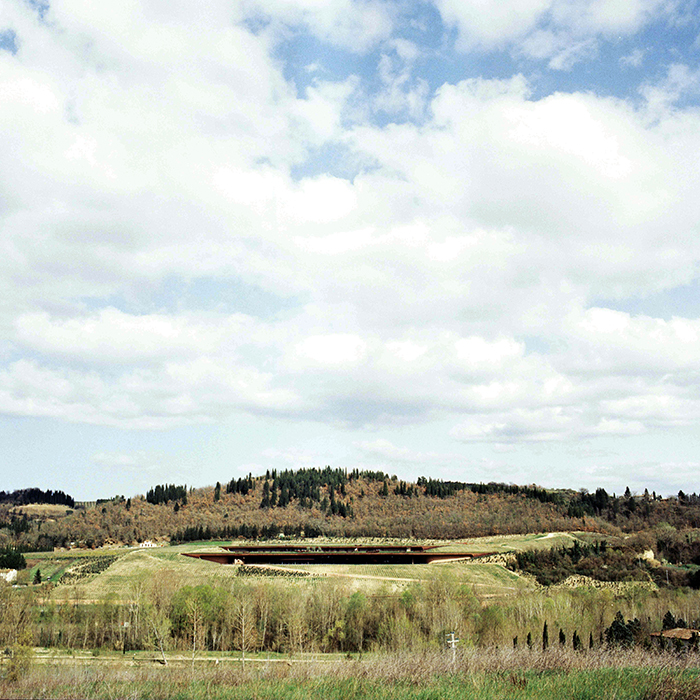The Super Tuscan revolution
Author: Chris Pollington

In 1968 the first vintage of Sassicaia was released as a Vino da Tavola by Tenuta San Guido, led by Mario Marchesi Incisa della Rocchetta, in conjunction with his cousin, Piero Antinori and Piero’s Head Winemaker, Giacomo Tachis. There, in Bolgheri on the Tuscan coast, started the Super Tuscan revolution.
The second wine to emerge in this great and glorious Tuscan upheaval was from Antinori’s own stable and their new Tignanello vineyard in Chianti Classico, where Cabernet Sauvignon and Cabernet Franc vines were planted to blend with Tuscany’s indigenous Sangiovese grape. In a region where many producers could trace their history back a millennium, the introduction of French varietals as stand-alone wines and into blends caused great dismay – seeing it as an erosion of tradition.
The shock waves from this rippled across northern Tuscany – prompting others to consider their own wines – and none more so than the young Paolo de Marchi who took over his family estate, Isole e Olena, in the late 1970s. He knew they had great Sangiovese, but at the time, the law prevented him from making Chianti Classico entirely from his best Sangiovese.
Taking a leaf out of the Antinori book, he decided to create his own Super Tuscan Vino da Tavola. Instead of blending Sangiovese with French varietals, he made a 100% Sangiovese wine, aged it partly in new French oak barriques and labelled it with the name Cepparello – a play on the Italian for vine plant (ceppo). The first vintage of Cepparello was released in 1980, the first 100% Sangiovese Super Tuscan. Thus started the story of one of the world’s best-loved Italian fine wines.
The wines have gone from strength to strength over the years, with introduction of longer ageing in oak, use of better-quality French and American oak, and greater quality of fruit as the age of the vines increases. In 1993 the law changed, and – for the first time since the DOC for Chianti was first introduced in the 1960s – a 100% Sangiovese Chianti Classico was permitted. By this time, of course, Cepparello had become a popular wine among the cognoscenti and Paolo saw no need to change anything apart from its legal classification. As the law would now not permit a vintage, nor mention of a grape variety for a Vino da Tavola, Cepparello therefore became an Indicazione Geografica Tipica (IGT) Toscana.
Many have followed the lead of Tenuta San Guido, Antinori and Isole e Olena, with the likes of Fontodi launching their 100% Sangiovese Flaccianello in 1981, and Piero Antinori’s brother Lodovico launching Bordeaux blend Ornellaia in Bolgheri in 1985. In 1990 Piero Antinori launched his Bolgheri Rosso and called it Guado al Tasso.
Many more have followed suit and what started as a revolution, has now become the norm in northern Tuscany. Most major producers produce some form of Super Tuscan, be it from French varietals, French and Italian varietals blended, or 100% expressions of indigenous Italian varietals. What was once an act of rebellion has become a new tradition for the region.
Browse our spotlight on the Super Tuscans, or find our full range from Tuscany on bbr.com



What about Solaia? This is (in my view) the finest, and certainly the most expensive, Antinori wine, but seems to be inexplicably neglected by wine writers.
Indeed Solaia is another of the early super Tuscan pioneers, also coming from the Antinori stable. The wine was born shortly after Tignanello, with the first vintage 1978. Coming from the Tignanello estate and essentially from the same galestro soil, it was a different expression being Cabernet Sauvignon (with some Cabernet Franc) dominated, in contrast to the Sangiovese-led Tignanello. Over time, with fine-tuning, Tignanello has taken on some Cabernet influence, and Solaia reciprocally has added some Sangiovese into the blend. It’s a classic, cellar-worthy, collectible Super Tuscan of the highest order. (We currently have some of the 2014 in stock.)
Best,
Matt Smith
Italy Buyer